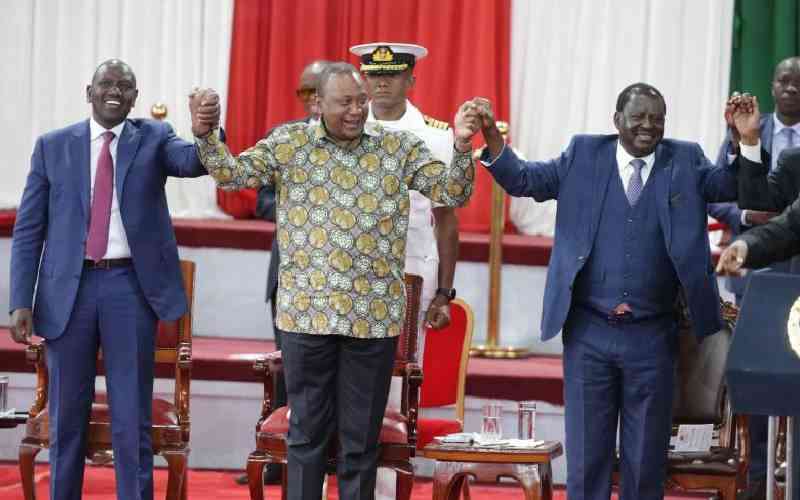The Micro and Small Enterprises Authority (MSEA), which has been in operation for less than two years, has set a target of creating 80 per cent of the one million jobs the Government has promised this year. We spoke to Acting CEO Patrick Mwangi on this ambitious target and why MSEA is well placed to deliver on it.
What is the role of MSEA?
Established in 2013, MSEA is a Government agency entrusted with handling all matters of micro and small enterprises (MSEs) in the country. Its legal mandate is to regulate, harmonise and co-ordinate the sector, as well as see to its growth. Most of these MSEs are at the bottom of the economic pyramid, and their opportunities for growth and up-scaling have been not been favourable.
How many MSEs do we currently have?
We cannot know the exact number of MSEs now, but we expect to conduct a survey once funds are available. However, we have 2,011 associations, with membership ranging from 35 to 2,000-plus. By June, we expect regulations governing the registration of MSEs to be gazetted by Industrialisation Cabinet Secretary Adan Mohamed.
What is the procedure for registering an enterprise as an MSE?
For those who have individual businesses, our officers, who are spread across all 47 counties, will be able to guide you on which association to join that has registered with MSEA. Associations are required to write a constitution, hold elections to appoint officials and be registered. We conduct trainings, identify their needs and see how we can provide user facilities.
What governed MSEs before the authority was established?
Before MSEA came on board, there were nine Government ministries and departments dealing with MSEs, including the ministries of Labour, Industrialisation, Trade, Commerce, Local Government, Agriculture and the Office of the President.
They each had various interventions for these enterprises, so everything was scattered. The MSE framework was disjointed and gave rise to a very haphazard and chaotic scenario.
So what informed the decision to set up the authority in 2013 and not earlier?
The authority was gazetted in March 2013, but being the year of transition, we were not fully operational due to the lack of a budgetary framework, among other issues.
However, the authority was conceptualised following a sessional paper in 2005 that identified the need to consolidate all the players and actors in the MSE sector. It is now 14 years since the players in the sector agitated for their own institution. We took over a fully-fledged Government department (Micro and Small Enterprises Development), which was under the Ministry of Labour.
What are some of the changes MSEA has effected?
For people running small businesses, their earnings are low, and with the escalating value of property, there is a tendency for them to be edged out from key trading areas. We have come in to protect all the property that had been earmarked for the MSE sector, be it a market or manufacturing zone. We are going further to see how we can add value to such land.
Stay informed. Subscribe to our newsletter
We also operate in an association model, which has more impact. We train entrepreneurs on business, managerial and leadership skills, and help them identify gaps and opportunities for growth.
We have also facilitated MSEs’ access to markets through trade shows and exhibitions in Kenya and abroad. Additionally, we have enhanced their visibility to relevant stakeholders.
What are the key challenges MSEs face, and what is the authority doing to address them?
A key challenge is poor access to markets. But since MSEA came in, we have been able to expose more than 2,500 enterprises to local and international markets. Last year, we took about 300 MSEs to Kigali, Rwanda.
Further, not all our products are competitive. The authority will launch a product competitiveness programme to ease the process of getting our products to new markets by addressing packaging, quality and quantity issues.
Another challenge is limited access to infrastructure, work sites and financial services. We are in the process of setting up a flexible framework that will help MSEs’ borrow cash and repay it, as well as enhancing access to work sites.
What is the future of MSEs in Kenya?
Currently MSEs’ contribution to the country’s GDP is about 20 per cent. The moment the bottom of the pyramid stops being a consumer economy and becomes a productive economy, MSEs’ contribution to GDP will easily hit a world record of 40 per cent.
 The Standard Group Plc is a
multi-media organization with investments in media platforms spanning newspaper
print operations, television, radio broadcasting, digital and online services. The
Standard Group is recognized as a leading multi-media house in Kenya with a key
influence in matters of national and international interest.
The Standard Group Plc is a
multi-media organization with investments in media platforms spanning newspaper
print operations, television, radio broadcasting, digital and online services. The
Standard Group is recognized as a leading multi-media house in Kenya with a key
influence in matters of national and international interest.
 The Standard Group Plc is a
multi-media organization with investments in media platforms spanning newspaper
print operations, television, radio broadcasting, digital and online services. The
Standard Group is recognized as a leading multi-media house in Kenya with a key
influence in matters of national and international interest.
The Standard Group Plc is a
multi-media organization with investments in media platforms spanning newspaper
print operations, television, radio broadcasting, digital and online services. The
Standard Group is recognized as a leading multi-media house in Kenya with a key
influence in matters of national and international interest.







